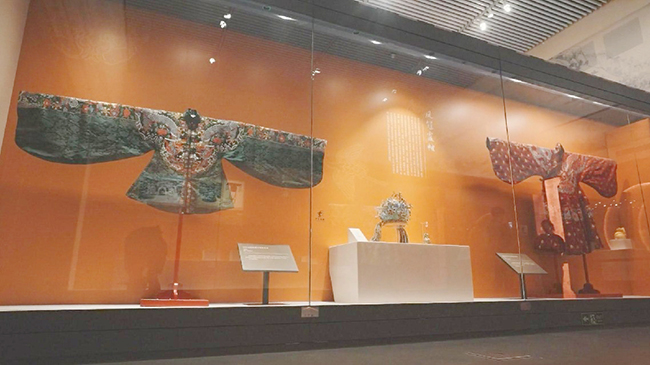当前位置 : International Daily News
 发布日期:2023/5/26
发布日期:2023/5/26
 来源:International daily
来源:International daily
 打印
打印

An exhibition of royal treasures from the time of the Wanli Emperor, Zhu Yijun, who ruled China during the Ming Dynasty(1368-1644), has opened in the Chinese capital Beijing, giving visitors a chance to glimpse the exquisite cultural relics from his 48-year reign.
The exhibition, at the National Museum of Classic Books in the National Library of China, features a unique collection of items lent by different cultural and heritage institutions that have never been seen together before, with some on view for the first time.
A total of 137 items showcase China’s cultural and artistic development during the Wanli period between 1572 and 1620 and the exhibition is staged in such a way that visitors get an insight into palace etiquette, daily life, overseas trade, and cultural exchanges during this important period in Chinese history.
Items from the tombs of imperial Ming Dynasty families, unearthed by archaeologists in the 1950s, are particularly striking with royal gold and silverware, jade, bamboo and wooden utensils, weaving and embroidery, calligraphy and painting, and porcelain, all splendid representations of the aesthetics of the time.
Among the must-see exhibits is the gold crown that belonged to the Wanli Emperor, the only gold emperor’s crown ever found in China.
"The National Museum of Classic Books mainly displays classic ancient books, including the 'Yongle Encyclopedia,' a great academic work from the Ming Dynasty. However, the content of the 'Yongle Encyclopedia' is mainly in the form of text, which may not be intuitive enough for visitors. This exhibition presents the precious cultural relics representing the essence of Ming culture, which echoes the content of the ancient books. So, visitors can have a more concrete understanding of the development of the political, economic, cultural, and artistic aspects of the Ming Dynasty by looking at the physical exhibits," said Gu Heng, director of exhibition department of National Library of China.
Beautifully crafted tableware, as well as jewelry worn by the emperor and empress, bring to life what a dining table at a Ming Dynasty palace might have looked like, while other artifacts give tantalizing glimpses into imperial life.
"We have selected a large number of Ming Dynasty patterns and decorative elements, as well as some unique elements of Ming Dynasty architecture to create the overall environment of the exhibition hall. When visitors enter the exhibition hall, they can immediately feel the artistic atmosphere of the Ming Dynasty. Such an immersive experience will help them better understand the connotations of the cultural relics on show," said Gu.
Visitors to the exhibition can enjoy spending time amid these priceless artifacts, browsing the other immersive and educational displays or even browsing beautifully crafted, though slightly less ancient, Ming Dynasty style pieces on sale in the museum gift shop.









